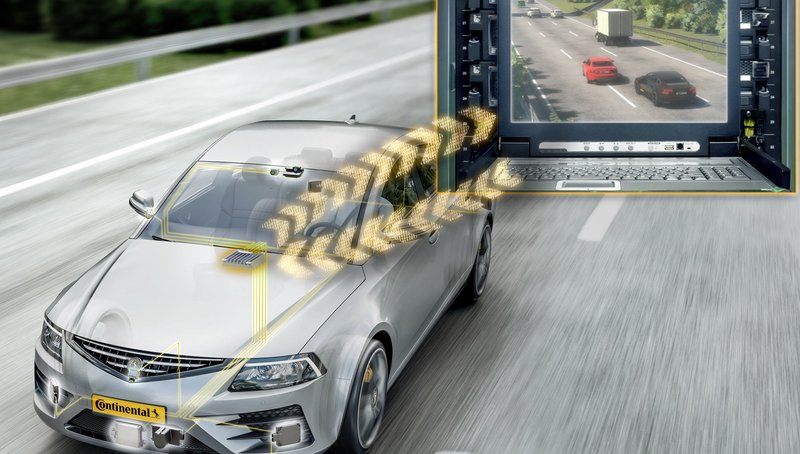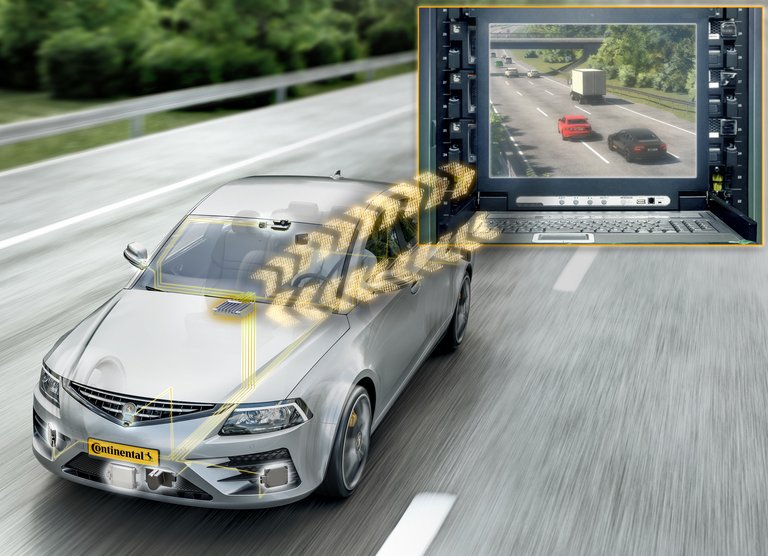Continental Invests in Virtual Development for Automated Driving and Collaborates with AAI
- Virtual simulation accelerates development for advanced driver assistance systems (ADAS) and automated driving (AD)
- Virtual tests help to reduce risks and offers full test recording capabilities for precise identification for software improvement
- Testing up to 8,000 kilometers (nearly 5,000 miles) per hour are possible with virtual simulation
Frankfurt, Germany/Las Vegas, USA, January 9, 2019. No compromise on safety, this is what the technology company Continental stands for. Through a unique collaboration with the German based start-up company Automotive Artificial Intelligence (AAI), Continental enhances its approach for virtual development of its ADAS and AD functions. Virtual development is already an integral part in today’s product development.
For the development of AD ready functions, a more complex - even real-world - virtual development and test environment is needed. In particular, this applies to the complex simulation of dynamic road-user behavior. The reason simulation with different driving styles (e.g. aggressive, defensive) is important for approximating reality more closely and avoiding unrealistically monotonous, predictable processes. Continental is responding by developing a highly scalable, highly modular development and testing environment that meets the new requirements. AAI has the competence to create virtual environments based on HD-maps and AI-driven road-users, with the intention of doing justice to the increasingly broader scope of validation in automated driving. The simulation tools developed within the collaboration will be made available to the entire automotive industry.
Safer, faster and more cost-efficient
“Our ultimate goal is always absolute safety. This is especially true for automated driving,” said Karl Haupt, head of the business unit Advanced Driver Assistance Systems at Continental. “Resources in vehicle test are limited and virtual testing can provide fast feedback for developers. While a real vehicle can drive around 10,000 test kilometers in a physical test in one month, today up to 8,000 kilometers per hour are possible with virtual simulation. This number will increase in future.”
Set at a level that guarantees the required level of safety, the number of test kilometers can be achieved faster and more cost-effectively. Real testing continues to be essential for driving function testing, since testing on a purely virtual level is not enough. Virtual tests help to reduce risks before real world testing and offers full test recording with data analytics and incident replay capabilities for precise identification of for software improvement.
AAI and Continental have already begun their collaboration. “This positions Continental as a pioneer in the field of virtual simulation tools for the automotive market,” Haupt said.
Two companies, two environments, one common aim
The collaboration sets up a clear separation between vehicle simulation and environment simulation. AAI is responsible for the environment, providing software that enables driving vehicles in a virtual world. Individual parameters determine the weather, traffic infrastructure, road markings, and objects such as road signs and potholes. As a second element, AAI uses artificial intelligence to integrate traffic participants (agents) into the virtual simulation environment and uses machine learning algorithms to train agent behavior, resulting in aggressive, moderate and defensive driver profiles. The long-term goal is to create a “replica of the world” and realistically simulate all road users and environmental factors.
Continental is responsible for vehicle simulation and is building a virtual vehicle with software that masters various driving functions at different levels of automation. Continental's task still includes completely representing its own vehicle and all the software components it contains, with the simulation task of driving dynamics. The entire ADAS product portfolio will be tested.
Since AAI and Continental are openly cooperating with each other, the interfaces of both environments are interconnected. “The cooperation makes our development cycles shorter and safer,” explained Dr. Gunnar Jürgens, head of driving functions within the ADAS business unit. “A big advantage of virtual simulation is test reproducibility and that a lot more use-cases can be tested virtually than we can in real-world testing.”
Collaboration with impact: Faster test procedures will bring automated driving on the road
All partners will benefit equally from the collaboration. Continental will gain software that can create realistic traffic simulations, enabling new products in the ADAS portfolio to be tested virtually. AAI increases its automotive sector and sensor technology expertise.
“For our young company, partnering with a technology corporation like Continental is a seal of quality,” said Isabel Metz, head of Business Development at AAI. “Continental's customers will also benefit because a faster test procedure guarantees safer, more robust and more cost-effective products.”

